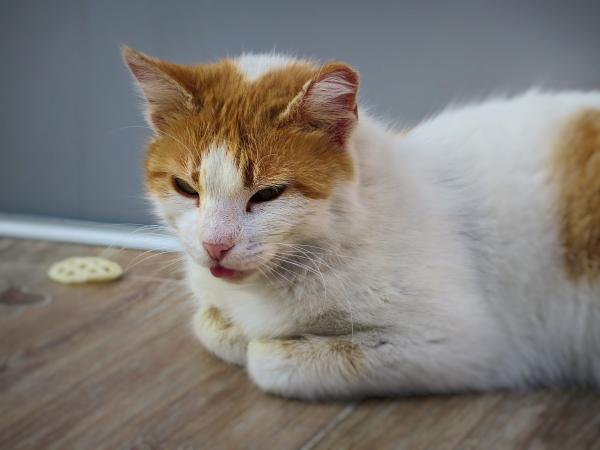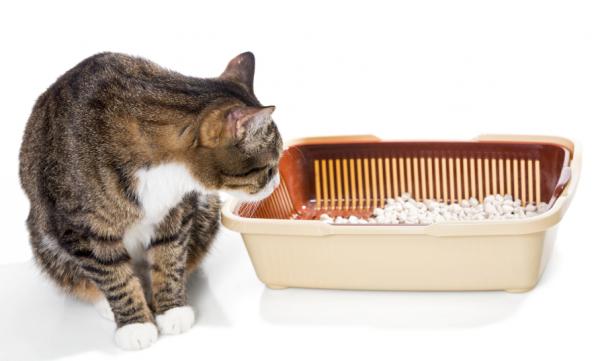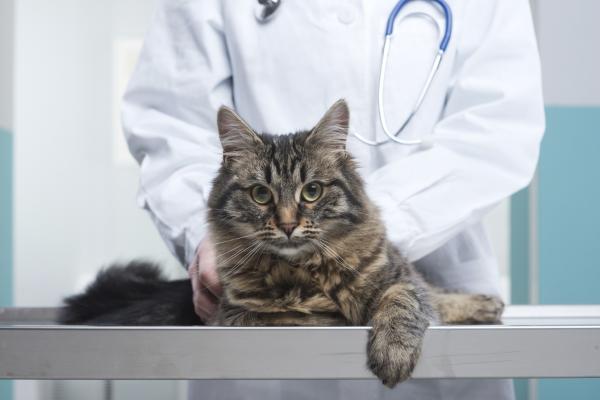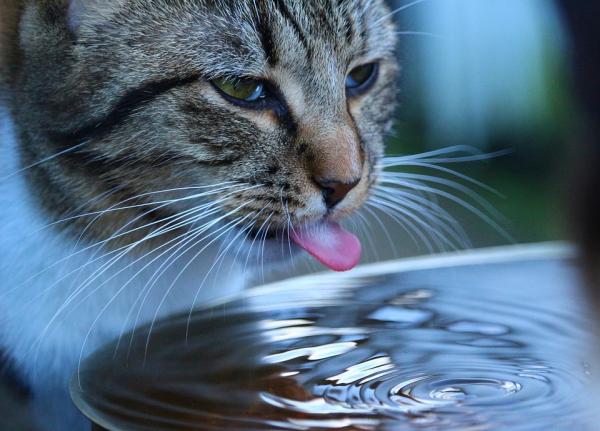Kidney stones in cats – Symptoms and treatment

Many animals, like cats, can suffer the same diseases as humans, although we often ignore this fact. That is why we recommend you to be alert to possible symptoms, strange behaviors and behaviors out of the ordinary, because cats are animals of customs, so any change in their habits indicates that there is a problem.
This time we want to talk to you about the Kidney stones in cats, their symptoms and treatment, because it is a disease that attacks cats more often than you imagine.
What are kidney stones?
Also called uroliths, and popularly known as “kidney stones,” this is the Excessive accumulation of certain minerals in the urinary tract of cats, affecting your ability to urinate.
In cats, there are two types of minerals that affect the feline most frequently:
- Struvite type calculations, caused by magnesium.
- Calcic type calculations, caused by high levels of acids in the urine.
When your cat tries to urinate, the stones build up in their ducts, preventing the urine from being expelled, no matter how hard the animal tries to exert urine, causing severe pain. The presence of kidney stones not only generates this type of discomfort and urinary infections, but a late diagnosis or lack of medical attention can cause the death of the animal in a very short time, when kidney failure occurs. The condition can get worse in just two weeks.

What factors cause its appearance?
Some elements can make your cat prone to develop kidney stones:
- Genetic predisposition: the Himalayas, Persians and Burmese usually suffer this disease more frequently than other races.
- Gender: it is more common in males than in females.
- Age: after five years, its appearance is more likely.
- Pharmaceutical products: Prologando use of some drugs, such as cortisone or tetracycline among others, can bring renal and urinary failures.
- Dehydration: the lack of water causes a failure in the kidneys and mineral accumulation.
- Diet: when your cat’s food is high in carbohydrates, magnesium, phosphorus or calcium.
- Infections: some urinary infections can result in the formation of stones in the kidneys of the cat.
What are the symptoms of kidney stones in cats?
When it comes to kidney stones, the most important thing is detect the condition in time, so you should be aware of any changes in your cat’s habits, such as:
- Problems urinating, reflected in an effort during urination, which sometimes does not work.
- Pain when urinating.
- Restlessness and nervousness.
- Samples ofblood in the urine.
- Urine in small amounts and frequently, not being able to expel everything in a single urination.
- Groans of pain when using the sandbox.
- The cat licks its genital area more frequently.
- Vomiting
- Depression.
- Lack of appetite.

How is the diagnosis made?
The veterinarian will need you to describe all the unusual signs that you have observed in your cat, and will use this and some tests to determine whether or not it is kidney stones in your cat:
- Palpating the abdomen of the animal to detect pain and lumps or swelling in the area.
- make a radiography that allows to analyze the kidneys, bladder and the entire urinary system in search of mineral deposits.
- Urine analysis to detect possible infections.
- Laboratory analysis to perform a study with the sample of a collected calculation.
All these studies will serve to discover urinary obstruction and at the same time determine what type of calculation is involved.

How is treatment done for kidney stones in cats?
The treatment indicated by the veterinarian will depend on the type of mineral accumulation that is affecting the feline and the level of severity of the disease. The options are varied:
- Change of diet: there are dry foods for cats specially formulated to treat kidney problems, but the most advisable thing is to opt for moist foods, since a greater amount of water helps to dilute the minerals accumulated in the urine.
- Cystotomy: it is a surgical operation applied to extract the stones.
- Elimination of mineral deposits: a catheter will be used to clean the stones in the area of the bladder. It is a somewhat uncomfortable procedure for the animal, but it is routine in these cases.
- Ureterotomy: tiny microscopes are used to evaluate the state of the urinary system and extract the stones, widening the urethra.
Any of these procedures is usually accompanied by treatments with drugs applicable at home:
- Using anti-inflammatory, to reduce swelling and relieve pain, improving the mood of the feline.
- Using Antibiotics, necessary in case of a urinary infection.
- Increase in consumption of fresh water, both to counteract the dehydration and to help in the dissolution of the calculations. You must do everything possible for your cat to increase its water consumption, some 50 to 100 milliliters of the vital liquid per kilo of weight is the recommended average.

Is it possible to prevent?
After reviewing the symptoms of kidney stones in cats and their treatment, you should know that you can help your cat to prevent its appearance with a few easy habits to get:
- Offer plentiful fresh and clean water.
- Give him one diet based on dry and wet food, in addition to low salt.
- Avoid situations of stress.
- Perform semi-annual check-ups to detect any illness in time.

This article is merely informative, in .com we do not have the faculty to prescribe veterinary treatments or make any kind of diagnosis. We invite you to take your pet to the veterinarian in case of any type of condition or discomfort.
If you want to read more articles similar to Kidney stones in cats – Symptoms and treatment, we recommend that you enter in our section of Other health problems.


